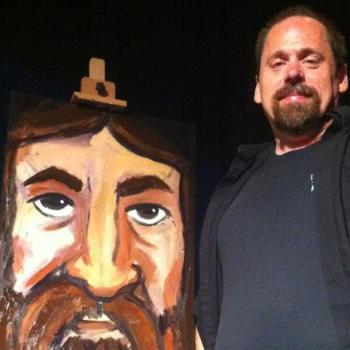 By Christopher Queen
By Christopher Queen
No one knows where Buddhism is going, of course, but the contributors to this fascinating discussion point to a range of likely possibilities. Given the global dispersion of the many Buddhist lineages and practices, particularly in North America, it is possible that all of the scenarios presented here -- including the decline of some traditions -- will come to pass somewhere for a period of time.
On the other hand, when we consider the likelihood of a particular prediction, it is worth asking it if is based on personal opinion or formal study, published reports, or survey and demographic data, for example. This is not to say that the latter are better: even fancy studies like the Pew Forum U.S. Religious Landscape Survey in 2008 -- based on 35,000 calls to landline phones -- can be misleading. How many young Buddhists do you know who list a landline phone as their primary contact?
Instead of trying to predict which paths the Dharma will take in the coming years, I would like to add some anecdotal support to the proposition that many Buddhists and sympathizers will continue to regard socialservice and activism as a part -- or even as the principal part -- of their spiritual practice. Certainly socially engaged Buddhist practices have been well documented in the mainstream media. Images of protesting monks in the streets of Lhasa and Rangoon in recent years, like the self-burning of monks during the Vietnam war, remind us of the ongoing struggle for freedom and human rights that robed and lay practitioners are leading in the Buddhist countries of Asia. In Sri Lanka, the Sarvodaya Shramadana movement mobilized tens of thousands of citizens to protest the war against the Tamils, and in October 2006, more than a million ex-untouchable Buddhists gathered peacefully in Nagpur, India to mark the first fifty years of their struggle for civil rights in a land still dominated by caste violence.
Here in the West, we know that groups like the Buddhist Peace Fellowship and the Zen Peacemakers have attracted thousands of socially aware practitioners who have vowed to relieve the suffering of all beings, including the suffering of people and ecosystems afflicted by hateful regimes and greedy corporations. Their activism has taken many forms: supporting Buddhist liberation movements in Asia, protesting environmental destruction at home and abroad, and bearing witness to the human evil and healing represented by the Auschwitz death camp in Poland.
Thousands of American Buddhists have seen the potential of adapting spiritual practices for the relief of suffering in the final stage of life -- through Buddhist hospice programs -- and behind the walls of a prison system that confines the largest percentage of citizens of any country in the world. Meditation practices have been introduced into hospitals and secondary schools, corporate boardrooms and police departments to promote mindfulness, stress reduction, and interpersonal kindness. The concept of Buddhist ministry as a path of professional training for compassionate care and social engagement has begun to catch on in such post-graduate settings as Naropa University and Harvard Divinity School.
Beginning in the 1980s, practitioners, activists, and scholars began to document the growth of Buddhist liberation movements in Asia and socially engaged sanghas, organizations, and practices in the West. By now the list of books and periodicals, websites and blogs are in the thousands and exploding weekly (see http://www.dharmanet.org/lcengaged.htm for a sampling). After reading The Path of Compassion: Writings on Socially Engaged Buddhism, a collection of essays by Thich Nhat Hanh, The Dalai Lama, Sulak Sivaraksa, Christina Feldman, Maha Ghosananda, and others when it came out in 1988 (it's still in print!), I was inspired to travel throughout Asia and the U.S. to learn how social action could be considered spiritual practice by so many people. Working on the volumes Engaged Buddhism (1996), Engaged Buddhism in the West (2000), and Action Dharma (2003) with more than sixty other scholars opened my eyes to the breadth and depth of the new movement.




